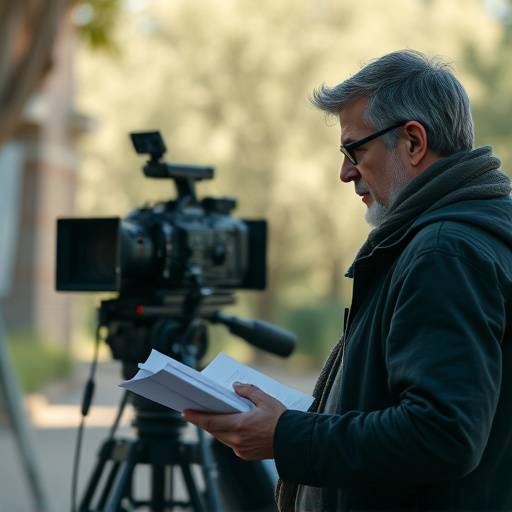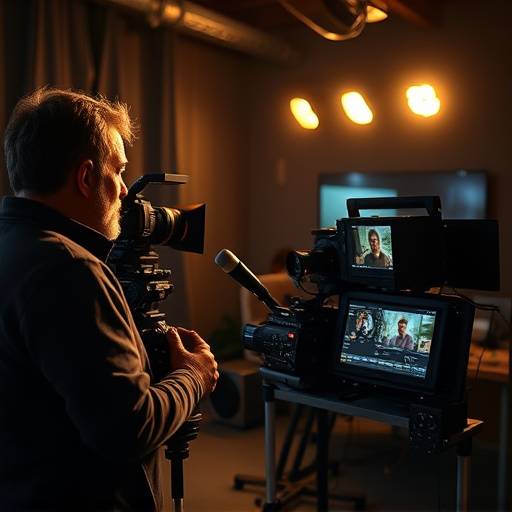
The Essential Guide to Script Analysis for Directors
A director's journey begins long before the cameras roll. It starts with a deep, comprehensive understanding of the script. Script analysis is not just about reading the words on the page; it's about uncovering the story's core, understanding the characters' motivations, and visualizing the world the playwright or screenwriter has created. At Directing Mastery Academy, we emphasize the importance of rigorous script analysis as the bedrock of effective directing. This article will guide you through the essential steps of this crucial process.
First, read the script multiple times – not just for plot, but for tone, subtext, and underlying themes. Make notes on character arcs, identifying key turning points and moments of transformation. Understand the setting intimately. Is it a character in itself? How does it affect the narrative? Then, break down each scene. What is the objective of the scene? Who are the key players, and what are their intentions? What obstacles do they face? Finally, consider the visual language. How can you translate the written word into compelling images and dynamic blocking? Effective script analysis provides the roadmap for bringing a story to life on screen.
Read More

Mastering the Art of Actor Direction: Techniques for Eliciting Authentic Performances
Directing actors is often cited as one of the most challenging yet rewarding aspects of filmmaking. It requires not only technical expertise but also a profound understanding of human psychology and the ability to communicate effectively with diverse personalities. At Directing Mastery Academy, we believe that successful actor direction hinges on creating a safe, collaborative environment where performers feel empowered to take risks and explore their characters fully. One fundamental technique involves detailed pre-production discussions. Before stepping onto the set, meet with each actor individually to discuss their character's backstory, motivations, and relationships with other characters. This fosters a deeper understanding and trust.
On set, provide clear, concise instructions. Avoid vague feedback like "be more emotional." Instead, offer specific objectives or actions that the actor can play. For example, "Try to convince him that you are trustworthy" or "Remember the pain of your past loss." Encourage improvisation and experimentation, allowing actors to bring their unique perspectives to the role. However, always maintain control of the scene's overall arc and ensure that the performance serves the story. Remember, a director's role is not to dictate, but to guide and inspire. By mastering the art of actor direction, you can unlock the true potential of your performers and create truly memorable moments on screen.
Read More

The Power of Visual Storytelling: Composing Shots That Communicate Emotion
Film is a visual medium, and as a director, you are primarily a visual storyteller. Every shot, every camera angle, every movement contributes to the overall narrative and emotional impact of your film. At Directing Mastery Academy, we emphasize the importance of intentional shot composition. Each decision, from the placement of the camera to the framing of the subject, should be made with a specific purpose in mind. Start by considering the emotional tone you want to convey. A wide shot, for example, can create a sense of isolation or grandeur, while a close-up can amplify intimacy or anxiety.
Experiment with different camera angles. A low angle can make a character seem powerful and imposing, while a high angle can diminish them or create a sense of vulnerability. Pay attention to leading lines and rule of thirds to create visual interest and guide the viewer's eye. Blocking, or the movement of actors within the frame, is another powerful tool for visual storytelling. Consider how the actors' positions and movements can reveal their relationships and internal conflicts. Lighting also plays a critical role. Use light and shadow to create mood, highlight important details, and sculpt the image. By mastering the art of visual storytelling, you can elevate your films beyond simple entertainment and create profound, lasting experiences for your audience.
Read More

Post-Production Essentials: A Director's Guide to Editing, Sound Design, and Music
Directing doesn't end on set. The post-production process is where your vision truly takes shape, and your collaboration with editors, sound designers, and composers is crucial to the final product. At Directing Mastery Academy, we equip our students with a strong understanding of post-production techniques to ensure they can effectively guide their projects through this final phase. Editing is more than just cutting and splicing scenes; it's about crafting rhythm, pacing, and emotional impact. Work closely with your editor to refine the narrative flow and ensure that each scene contributes to the overall story.
Sound design is often overlooked but is essential for creating a fully immersive cinematic experience. Pay attention to ambient sounds, Foley effects, and dialogue clarity. Work with your sound designer to create a soundscape that enhances the atmosphere and emotional impact of each scene. Music is another powerful tool for evoking emotion and shaping the audience's experience. Collaborate with a composer to create a score that complements the story and elevates the emotional stakes. Remember, post-production is not just about fixing mistakes; it's about refining your vision and polishing your film to its full potential. By actively participating in this process, you can ensure that your film delivers the impact you intended.
Read More



